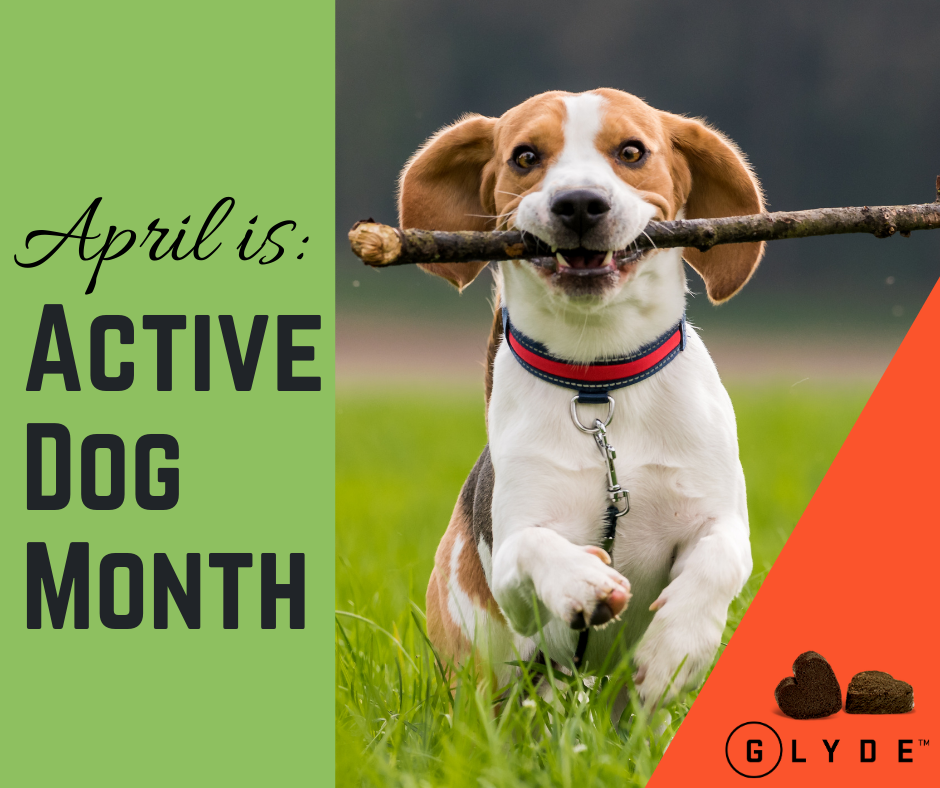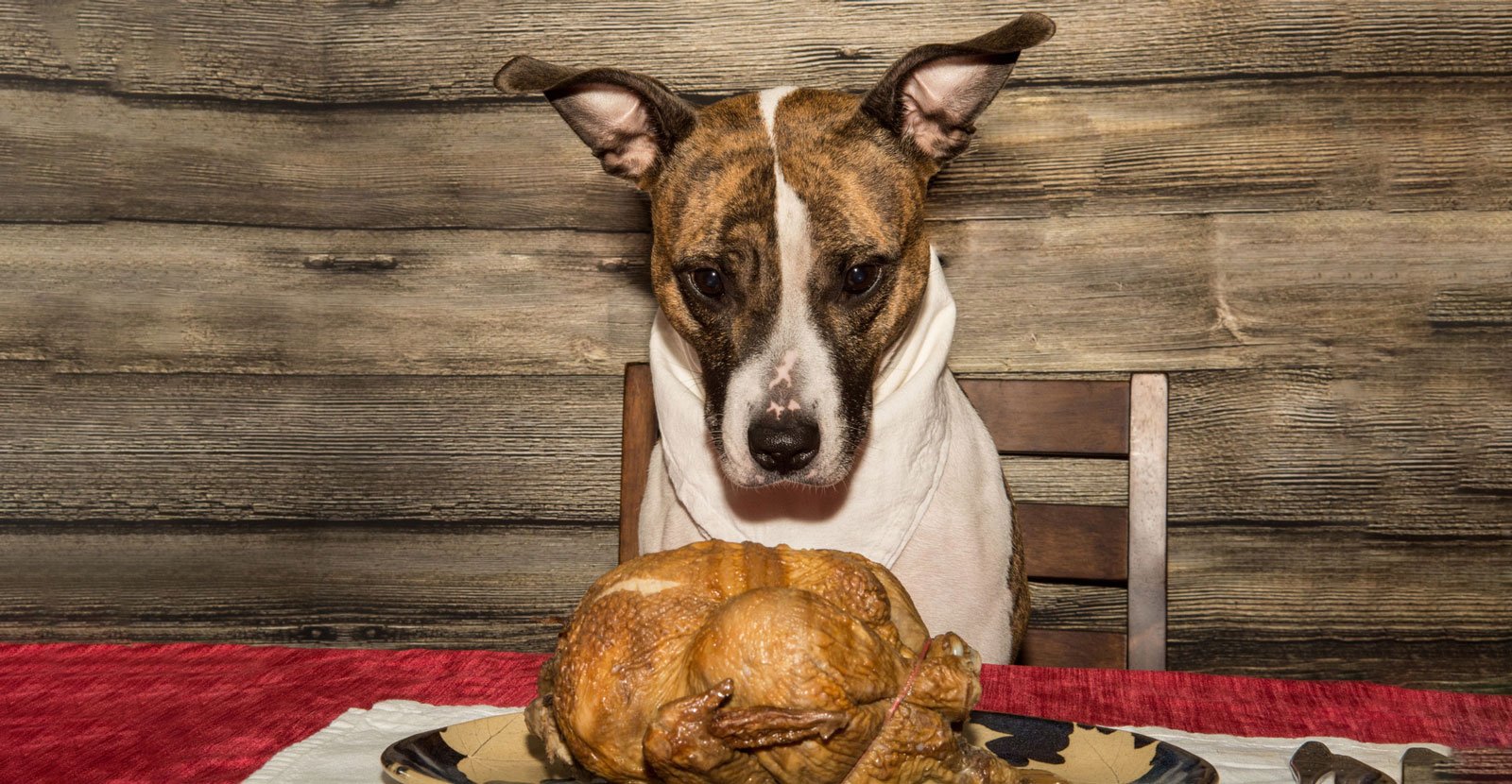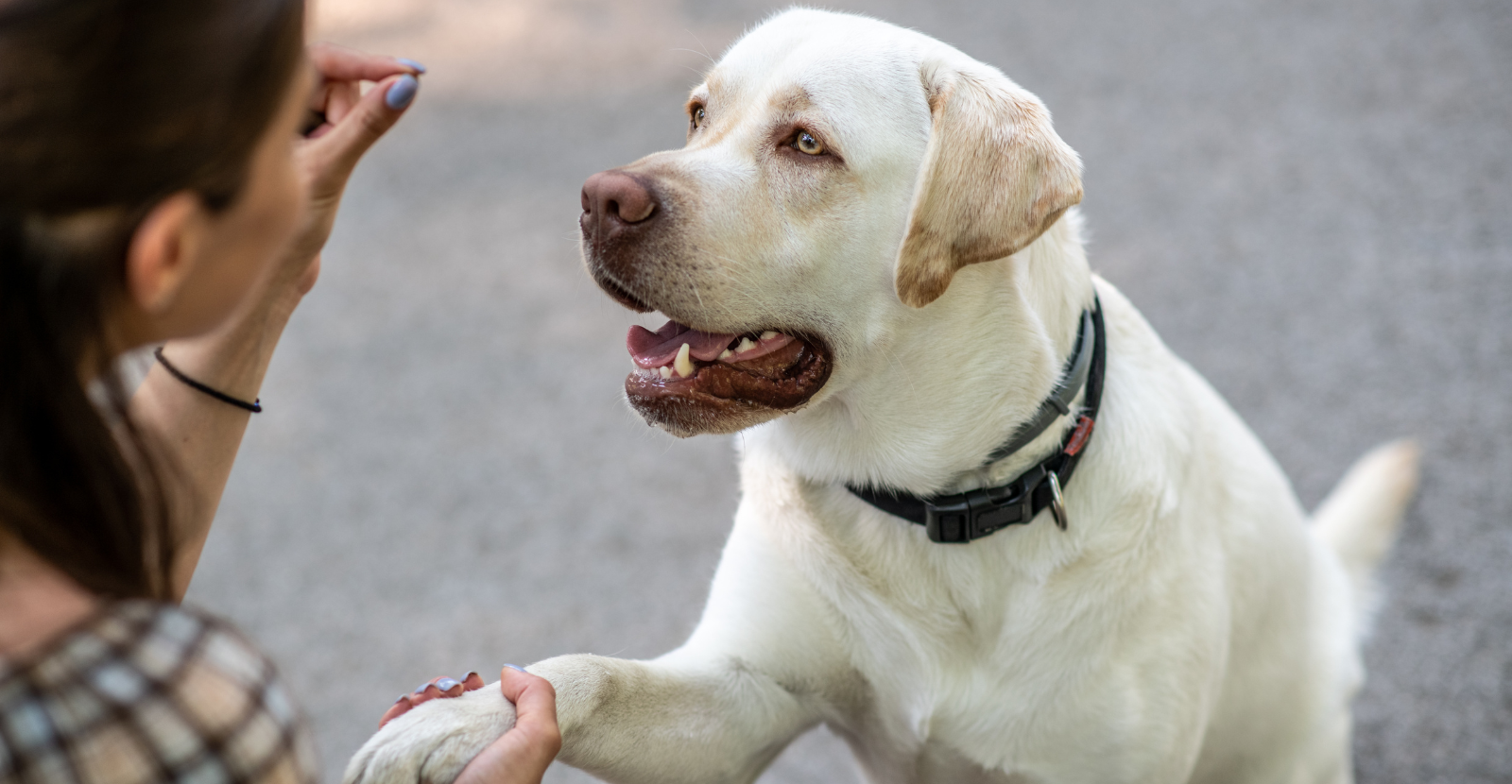April is #ActiveDogMonth and we are celebrating with tips to keep your dog active and healthy all month long. Last week, we shared Active Dog Month Tips. This week, we are about making the best out of a key to dog ownership: walking the dog.
While it sounds easy: put a leash on your dog, then step outside. There are a few ways you can improve your dog walking techniques for both you and your dog. Read on for dog behaviors explained, as well as activity checks to be sure you are optimizing the dog walking experience for both you and your dog.
Top dog walking questions, answered:
When is the best time to take our dogs for a walk?
Most dogs would say anytime! Spring is the perfect time to take your dog for a walk. And, as it’s April #ActiveDogMonth, get out there now. As the heat of summer arrives, start walking your dog early in the morning or later at night. The hot pavement is not ideal for the paws of our furry family.
How long and how often should you walk the dog?
Ultimately, how long and how often you should walk your dog all depends on you and your dog. If you try to walk just 30 minutes a day with your dog, it is great for your health and your dog’s health. Advanced walkers can take their dogs for an hour or more. By walking an hour, a day, most people can reach the daily step goal of 10,000 steps per day. This is a goal many of us are trying to achieve for a healthy lifestyle.
Why does my dog stop and smell everything?
Remember, dog walks are more than just exercise for our dogs. Dog walks give our dogs the opportunity to catch up on the day’s activities. Which dog or animal was there earlier? Many compare it to “reading the paper” of the neighborhood. They know based on scent what dogs visited the site before them. Don’t hurry your dogs through the pleasure they get from smelling the scents.
However, you can train them when with a cue when they can smell, and when you want to go. Try this: “Go smell,” when you are good with letting them take some time. Then try: “Let’s walk,” or “Let’s go,” to indicate it’s time to move.
You are walking your dog, not your dog walking you.
Humans with their two legs will always walk too slow for dogs trying to get to the next scent ahead. It is recommended by the AKC to work with your dog through training and not let them pull you and walk ahead but walk by your side. If your dog starts to pull too much, stop the walk and wait until they calm down or step backward. This is doing the opposite of what they want to do. Eventually, with training, they will learn pulling does not help them get there faster.
5 Tips to Prevent Your Dog from Walking You
- Ditch retractable leashes. They are unreliable and can sometimes break if your dog lunges quickly. It’s dangerous to you and the dog. These leashes are best for very small dogs.
- Keep your leash short. Very long leashes are dangerous as they get tangled. True walking leashes should be shorter so your dog cannot get too far ahead of you. Teach them to walk to the left in step with you, rather than ahead of you.
- Attach your leash to a harness, instead of a collar. Most dogs will behave much better with the harness around their bodies, rather than a collar only.
- Use a harness with an attachment in the front, instead of the back. Think of how a horse pulls a cart. If you attach the leash to the back, this is a perfect pulling position for your strong dog. If you attach the leash on the front of their harness, it’s counter-productive to pull. Once they start to get too far ahead, their bodies turn with the harness.
- Use positive reinforcement. Treats will always be a great reward when you begin the process of leash walking. The more they do it, the easier it will be. Eventually, you will be able to drop treats from the regimen.
The AKC has a great video with instructions on how to prevent your dog from pulling.
What if my dog does not want to go on a walk?
With all this extra activity, your dog needs to stay healthy and ready to go. If your dog is not interested in walking, it may be they have a joint problem. One of the top dog health problems is arthritis in dogs. As joints age, they get stiff and sore, especially with extra activity. Protect your dog's joints with a supplement to keep their joints healthy.
The best way to make sure you are protecting your fur-baby’s joints and ensuring maximum play time is to make sure you are providing vital nutrients found in a joint supplement. Glyde® Mobility Chews is one of the best joint supplements you can give your dog to protect their joints and provide them with essential, natural ingredients to promote joint health.
Glyde is the only joint supplement with three proven key ingredients to relieve the painful signs of arthritis: glucosamine, chondroitin, and, of course, the power of New Zealand Green Lipped Mussel (GLM). GLM is what makes us different as it is an all-natural anti-inflammatory, helps improve joint function and is one of nature’s best sources of Omega-3 fatty acids.
Hopefully, this gives you some ideas for getting out there and being more active for #ActiveDogMonth and getting the most out of those dog walks! Enjoy the spring and your dog as you get out more!













